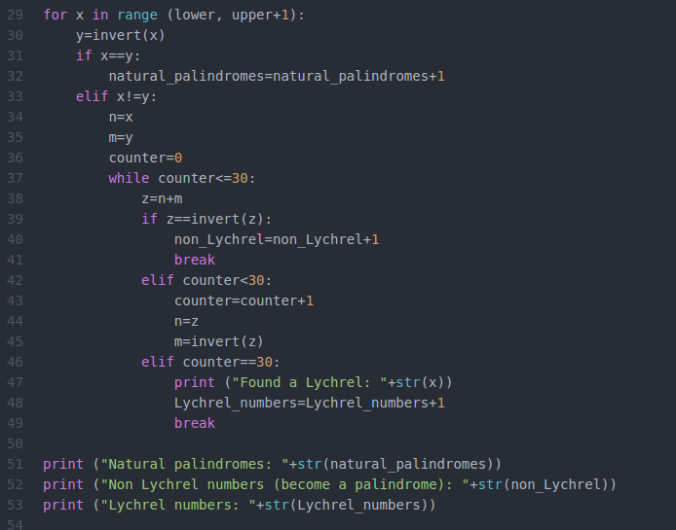--Originally published at Fundamentos de Programación
Long time ago I tweeted that I was going to do all the proyects from a previous Ken’s course but it’s been a long time and I haven’t posted a single solution.
 +
+
It’s not that I haven’t done them, is just that I didn’t know which one to post, so I chose the lychrell number challenge because I thought it was really interesting, I didn´t even knew that kind of numbers had a name!
So here is what the challenge said:
WSQ11 – Yo Soy 196
Lychrel numbers are natural numbers that do not form a palindrome after successive additions to their inverse. See details on Wikipedia:http://en.wikipedia.org/wiki/Lychrel_number
What to Do
Your jobs is to create a program that asks the user for two pieces of data:
- The lower bound of the sequence
- The upper bound of the sequence
Details
- The range of numbers analysed (lower to upper bound)
- The number of natural palindromes (no addition to inverse needed)
- The number of non-Lycherels encountered (become palindromes)
- The number of Lycherel number candidates (that did not converge to palindrome)
Since you will not be able to prove that a number is Lycherel (since you cannot computer forever to check), our definition for a Lycherel candidate will be if a number does not converge after 30 iterations of applying the addition to the inverse.
Here is my solution:


We begin validating the user’s input as always with try and except inside a loop.
We create a function that reverses

The for willdo one of three:
Indicate that it is a natural palindrome if without any cycle repetition it is a palindrome.
If the number after 30 or less loops becomes a palindrome, and
If the number, after 30+ loops is still not a palindrome.
The output is the amount of natural palindromes, the number of non-lychrell numbers and print the lichrel numbers, like this:

It was pretty fun to make. If you have trouble understanding what the program is supposed to do (like me) check out Ken’s video:
Thanks guys!
Follow me on twitter @danigguemez
Code on Github: https://github.com/Guemez/TC1014/blob/master/yo_soy_196.py
Sources: http://kenscourses.com/tc101winter2015/course-home-page-for-tc1014/wsqs-tc1014/wsq11-yo-soy-196/
#TC101 #python #KenCoursesChallenge #yosoy196
